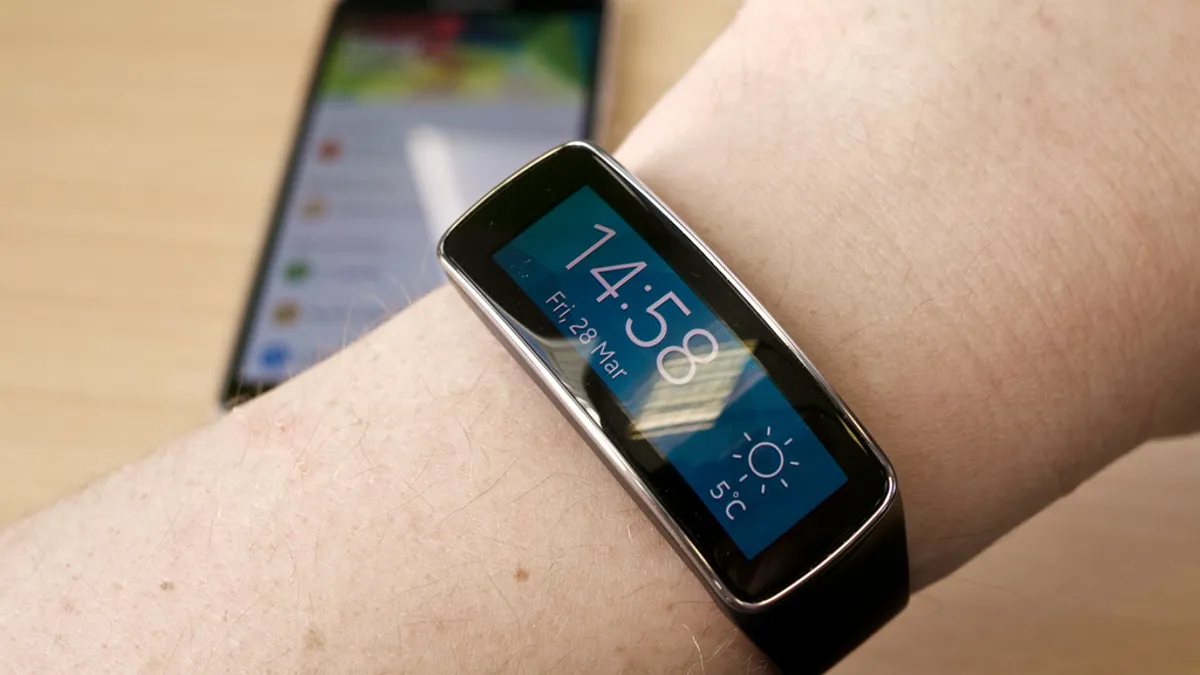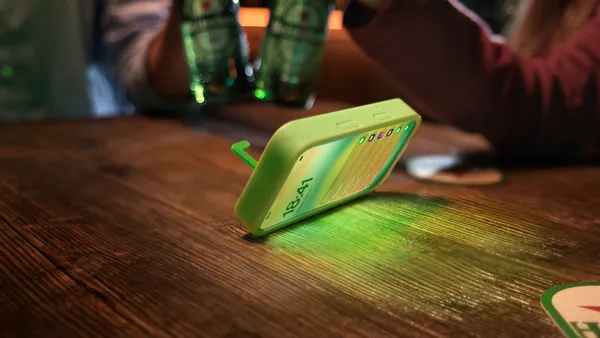Dive Brief:
- ABI Research predicts that the enterprise wearables market will continue to grow through 2021, and that the largest area of growth will be in body-worn devices like head-mounted displays while wrist-worn devices like smartwatches will grow at a slower clip, according to a company press release.
- The firm forecasts wearable shipments to grow from 30 million in 2016 to almost 147 million in 2021. Wrist-worn shipments are expected to triple, reaching 30 million in 2021, and body-worn devices will grow from 20 million to more than 116 million in 2021.
- The findings are part of ABI Research's Wearable Device Market Share and Forecasts, with the release pointing to investments by Google, Microsoft, ODG and Vuzix as the reason for increasing adoption of enterprise wearables while workers migrate to more desk-less and dynamic work environments.
Dive Insight:
The body-worn segment of wearables covers a much wider variety of devices than the wrist-worn segment to include smart glasses, VR headsets, “hearables,” wearable cameras such as Snapchat Spectacles and mHealth devices, according to Stephanie Lawrence, research analyst at ABI. Lawrence added that wrist-worn devices are "great at collecting data," but have limited enterprise appeal while body-worn devices allow workers to stay connected and access system information in a hands-free manner.
Enterprise deployments can be an important way of introducing consumers to new technology. If they like using body wearables at work, they may starting exploring ways to leverage them on their personal time as well, opening an opportunity for marketers to engage with them in some unique ways.
While ABI Research sees enterprise wearables growing, the market in general — particularly the consumer-facing side, which is currently concentrated on smartwatches and fitness trackers — appears on the wane. Last month, eMarketer readjusted its outlook for wearables, slashing growth forecasts from 60% in October down to just 24.7% to end 2016. The main reason for the change was an inability for the space to push past early adopters, along with users not finding the price-to-value worthwhile, especially with smartwatches.
While ABI's predictions are centered on the enterprise space, other analysts have seen a growth in products like AR/VR hardware on the consumer end. In December, the International Data Corp. (IDC) forecast that augmented reality headset shipments will reach 15 million by 2020 and that VR devices will lead the market in terms of volume, with 61 million units expected to be shipped the same year.














